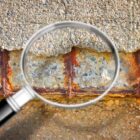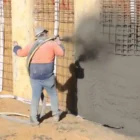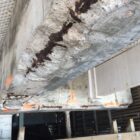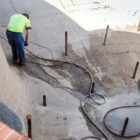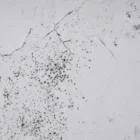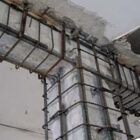
We often find cracks – structural or non-structural – in constructed elements. Distinction between both the types need a thread bear Technical analysis.
Cracks occur because of these reasons.
- Pressure from one side of the element which can’t be resisted by the element as a whole.
- Stresses generated within the element.
- External thrust or impact,
- Differential settlement / expansion / contraction (shrinkage).
- Humidity ingress.
- Change in service condition of the element.
- Distress in under designed structures.
There could also be few more reasons for crack formation in the element.
Crack is a separation plane within a homogeneous element which is beginning of the distress within the element. While depth and width of any crack can’t be ignored, its formation can’t also be neglected because it gives an avenue or access for deteriorating elements (gaseous or liquid or solid) to enter the element and reach its core. If this element is hygroscopic in nature, it make its approach easier to reach the core of concrete. Methods are available in the world of non-destructive and semi destructive testing for reaching the reason of generation of crack. Successful sealing of crack can be declared only when it doesn’t reoccur.
Bridging the crack can be done in many ways but if it is done without knowing its reason, it might reoccur. It is noteworthy that more often than not just sealing the crack or bridging it with a filler paste or a shrinkage free compound may not be enough, because that is not a scientific repair of crack.
Accord Specialities Contracting LLC has a unique experience and knowledge to analyse any crack irrespective of its plane of existence or its reason. The cracked structures attended and repaired by Accord Specialities Contracting LLC have not shown any sign of recurrence of cracks at least for one year.
Remember Accord Specialities Contracting LLC for rectifying any cracked structure.



